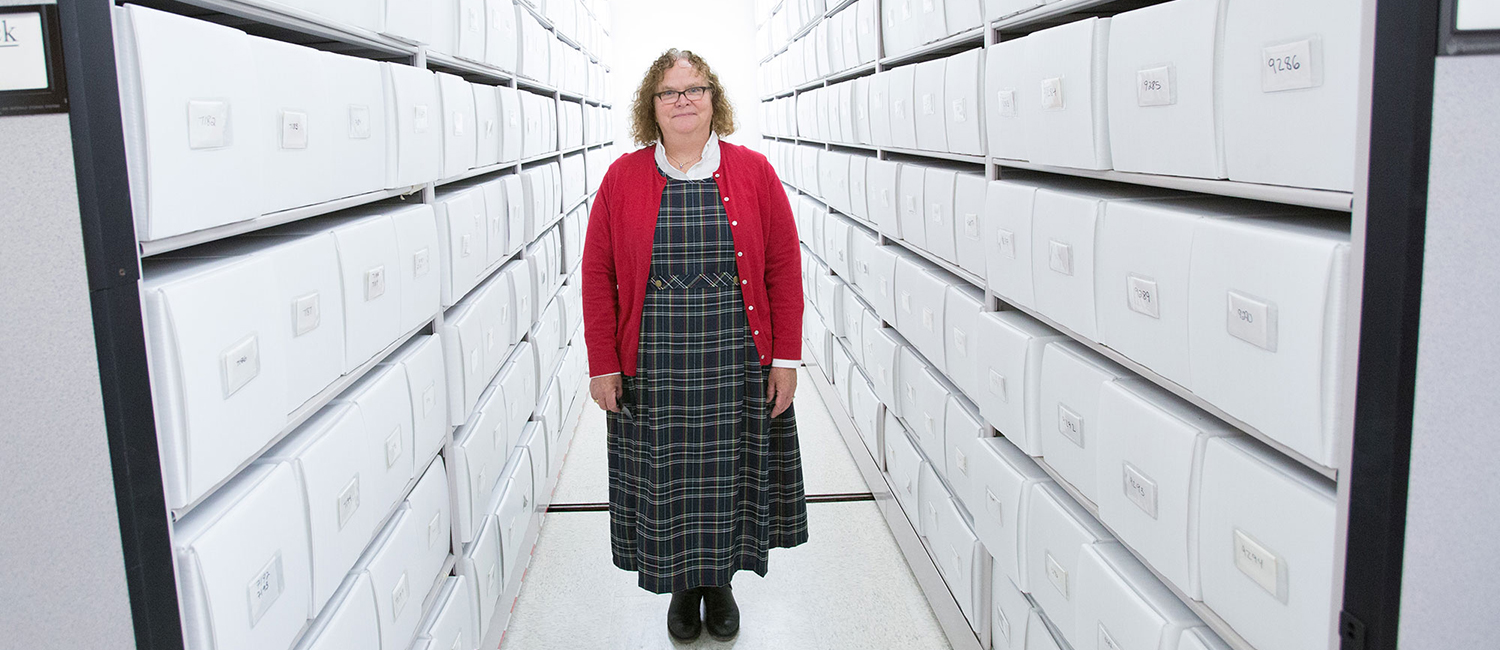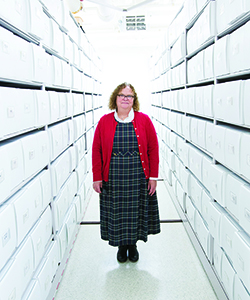
Anthropologists uncover Wisconsin’s past
In the 1860s, a man, likely a German immigrant, died in Milwaukee. He was buried in Gruenhagen Cemetery in the city’s Second Ward. Time passed, and the cemetery was closed, built over and lost to history.
Then in August 2015, the Guest House, a local homeless shelter, broke ground to expand into the empty lot next door. The man’s grave – and 82 more – were rediscovered. Construction was halted, and the shelter called the UWM Cultural Resource Management program (UWM-CRM) for help with the unexpected exhumations.
Public and private agencies hire UWM-CRM to comply with state and federal laws regarding the preservation of historical sites. UWM-CRM, a contractual arm of the anthropology department, conducts historical surveys in advance of planned construction jobs and helps clients avoid disturbing archaeological sites by redesigning the project. If a redesign isn’t possible, UWM-CRM may excavate the site or provide a detailed historical analysis of buildings, artifacts or bodies found.
These discoveries help scientists and historians gain a broader understanding of the people who used to live and work in Wisconsin from its prehistoric days to the early 20th century.
Since 1974, UWM-CRM has been busy locating, documenting, excavating and analyzing sites across the state, and even in Illinois, Michigan and Indiana. In years past, the program has excavated forgotten paupers’ graves near the grounds of the Froedtert & the Medical College of Wisconsin complex, conducted research at the 11th-century Aztalan site in Jefferson County, and more.
“I think a lot of people don’t realize how much cultural past still exists,” said Patricia Richards, the program’s associate director. “We sort of become the cemetery people, for both prehistoric and historic cemeteries.”

The program hires scientists and archaeologists, in addition to UWM graduate and undergraduate students, to work the sites and conduct research. Many of those students go on to earn graduate degrees at UWM or work for other cultural resource management organizations.
“I’d been working for CRM more or less consistently for the last two or three years,” said doctoral student Marcus Schulenburg, a field tech for the program. “I was very excited for a chance to be a part of it, to work on-site and get experience.”
Schulenburg was among the crew excavating Gruenhagen Cemetery, and he and his colleagues found a wealth of information hidden in the bones. Remember the German immigrant? He was probably middle-aged and malnourished. His spine was compressed, which hints at a life of hard labor and back pain.
Bone analysis typically determines the approximate age of an individual, as well as gender and any obvious traumas or pathologies that might give hints as to his or her lifestyle. Such information from any burial site provides insight into the lives of the state’s early settlers.
“We learn a lot about lifeways, patterns of disease, the effects of poverty on particular populations, those kinds of things,” Richards said.
After analysis, the Wisconsin Historical Society determines whether the bones will be reinterred. If not, they are laid to rest in boxes that line the sliding shelves in the basement of Sabin Hall, where UWM-CRM’s “archive” is housed.
Upstairs, UWM-CRM’s storage rooms are lined with bottles from a 19th-century Irish homestead in Waupaca County and artifacts from other sites. In a laboratory, a scientist analyzes the chemical compounds in a clay pot. Tables are blanketed in arrowheads dating to 100 B.C., recovered during a reconstruction of Highway 57 in Door County.
“One of the things about Wisconsin in the prehistoric period was that there were people moving through here, coming from the south, coming from the north down the Mackinac Straits through the Great Lakes. We get a lot of odd pottery, and one of the things that we try to determine is where it came from,” said John Richards, UWM-CRM’s director.
Although that information is useful for learning more about Wisconsin’s past, Patricia Richards said, UWM-CRM is about more than just excavations and research.
“We charge cost and materials. That’s all it is for us,” she said. “(We) feel very strongly that folks that were recovered from these cemeteries that were forgotten … had their own story. It’s our responsibility to tell that story.”
___
Read the full 2016 UW-Milwaukee Research Report.